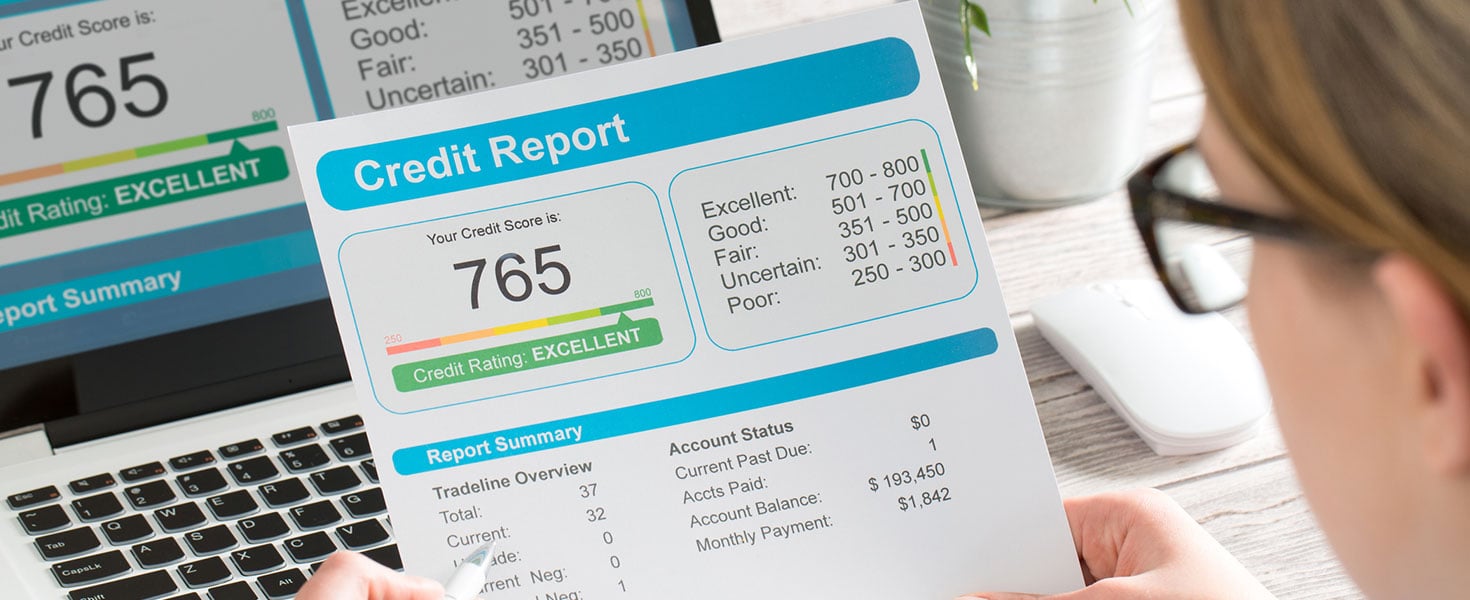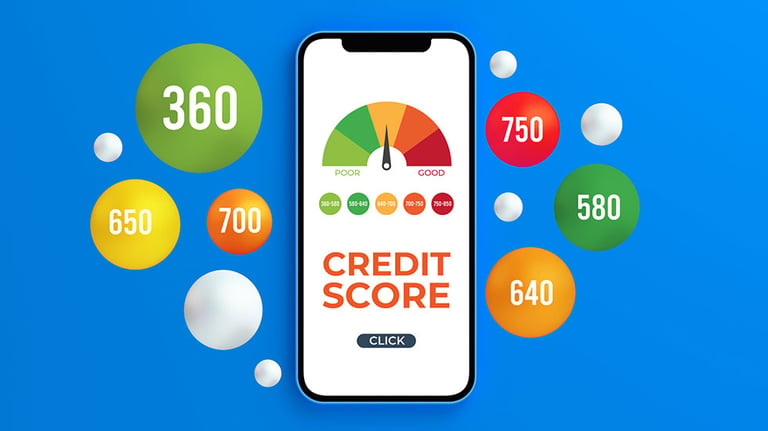
Credit scores are calculated using scoring models that perform sophisticated statistical analysis of your credit report contents—your repayment history, length of your credit history, and more, as reported by the three major credit bureaus. Scoring models developed by VantageScore® and FICO® Score differ in how they arrive at your credit score, but both models use a three-digit number to help creditors make lending decisions.
The VantageScore was created by the three major credit bureaus: Experian, Equifax, and TransUnion. The current VantageScore 3.0 model uses a range between 300 and 850. A VantageScore above 700 is considered to be good, while above 750 is considered to be very good.

What Does My Credit Score Mean?
Credit scores are tools that lenders use to help them decide to give you credit and anticipate how likely you are to repay your loan on time. Credit scores are also sometimes called risk scores because they help lenders assess the risk that you won't be able to repay the debt as agreed.
Having a good credit score determines whether you'll qualify for a loan. Depending on the interest rate of the loan you are eligible for, it could mean the difference between hundreds and even thousands of dollars in savings over the life of the loan. A good credit score could also help you rent an apartment or qualify for smartphone service.
How Many Credit Scores Are There?
A common myth about credit scores is that there is only one credit score. There are many different credit-scoring models lenders use. Some estimates suggest there are more than 1,000, although some scoring models are used more than others.

What Is a Good Credit Score?
For a score with a range between 300-850, a credit score of 700 or above is generally considered good. A score of 750 or above on the same range is considered to be very good. Most credit scores fall between 600 and 750. Higher scores represent better credit decisions and can make creditors more confident that you will repay your future debts as agreed. FICO® Score and VantageScore® are two of the most common types of credit scores, but industry-specific scores also exist.
What Is a Credit Utilization Rate or Ratio?
Credit utilization rate, sometimes called your credit utilization ratio, is the amount of revolving credit you're currently using divided by the total amount of revolving credit you have available. In short, it's how much you currently owe divided by your credit limit, and it's typically shown as a percentage.

FICO Score Ranges
- Very Good: 750 to 850 - FICO® Scores in the range of 750 to 850 are considered exceptional. Borrowers with scores in this range are generally easily approved when they apply for new credit. They are also likely to be offered the best available lending terms, including the lowest interest rates and fees.
- Good: 700 to 749 - FICO® Scores in the 700 to 749 range are considered very good. People with scores in this range may qualify for better interest rates from lenders.
- Fair: 650 to 699 - FICO® Scores in the range of 650 to 699 are deemed good. This range includes the average U.S. credit score, and lenders view consumers with scores in this range as "acceptable" borrowers. Individuals with scores in this range are likely to qualify for a broad array of loans and credit cards but are likely to be charged interest rates somewhat higher than the best available.
- Poor: 550 to 649 - FICO® Scores that range from 550 to 649 are considered poor. Lenders may disqualify individuals with these scores if they apply for mainstream loans. Consumers with scores in this range may be regarded as subprime borrowers, eligible only for loans with interest rates significantly higher than the best available.
- Very Poor: 300 to 549 - FICO® Scores that range from 300 to 549 are classified as very poor. Many lenders reject credit applications from individuals with scores in this range. Credit card applicants with scores in this range may only qualify for secured cards that require placing a cash deposit equal to the card's spending limit. Utility companies may require customers with scores in this range to put down substantial security deposits.

Expand Your Range
Knowing where your credit score falls on the score range for both the VantageScore and FICO® scoring models is essential to understanding how lenders see you. The score ranges also help you track your progress over time as you work to improve or maintain your credit score. With patience and practicing good financial habits, you can maintain "good" credit. To stay on track, avoid late payments and focus on keeping your credit utilization below 30 percent of your available limits.
Also, check your credit report often. It will let you know if there are any unfavorable or suspicious entries in your file that could indicate identity theft.
Strong knowledge of your credit scores and how your credit behaviors influence them can help move your score up the score range. It can also help you gain access to more opportunities to achieve your financial goals.
This content was created in partnership with ProtectMyID.
